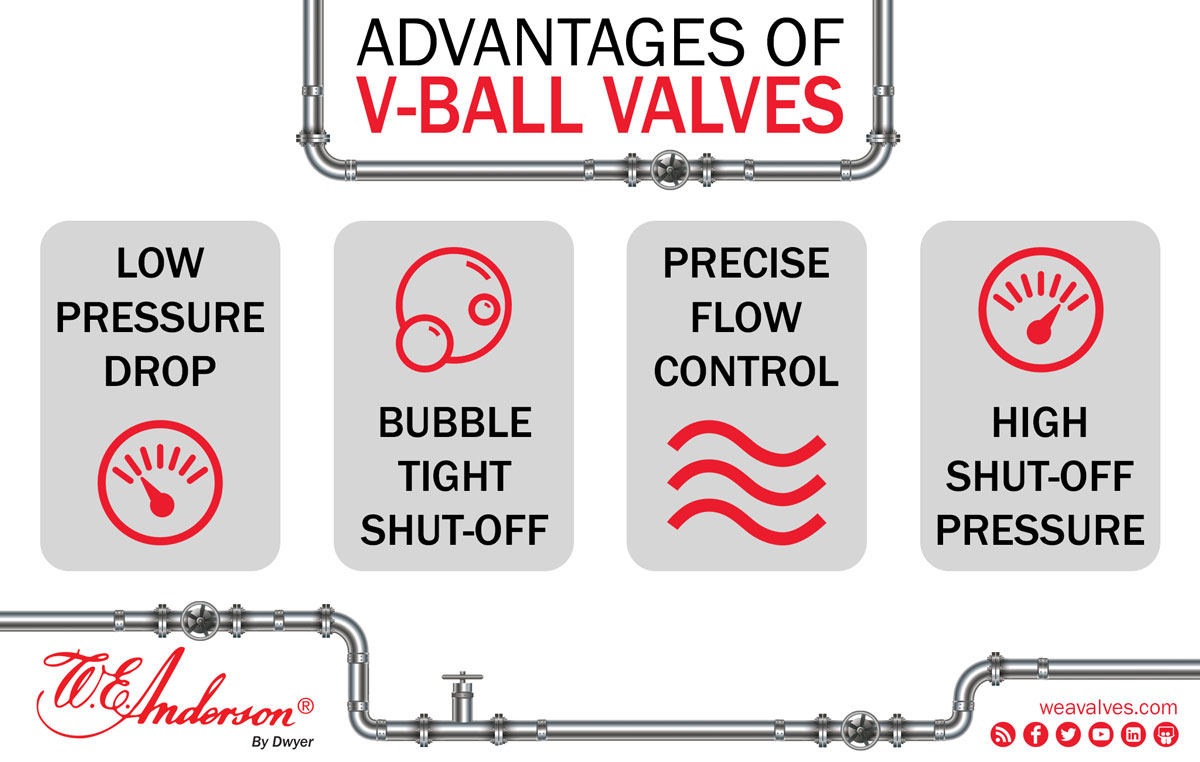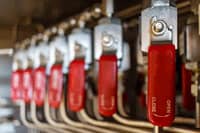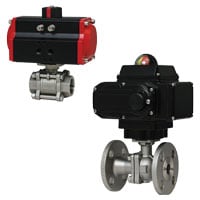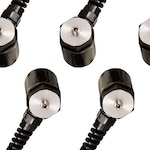
Introduction
Ball valves are designed to be used in a variety of applications and markets, but a V-port ball valve offers the added ability to be used as a control valve where necessary. The main differentiator is a contoured V-port in the ball, most commonly available with a 15°, 30°, 45°, 60°, or 90° angle, which produces an equal percentage flow characteristic for better control. V-ball valves are known to offer a variety of advantages in flow control applications, especially when compared to larger and more expensive control valves.

Low Pressure Drop
The V-port design allows material to flow straight through the valve, minimizing pressure drop across the valve. V-ball valves also have higher flow coefficients (Cv) compared to other control valve types of a similar size; this means that a smaller V-ball valve can be used to achieve the same flow rates as a comparable control valve of a larger size.

Bubble Tight Shut-Off
V-port ball valves use the “floating ball principle, which will provide a bubble tight shut-off in addition to the modulating flow control. When the valve is closed, upstream pressure pushes the ball against the downstream seat, thus enhancing the seal. These can control or shut off bi-directional flow, which proves to be especially beneficial in gas applications. Comparable control valves often require additional shut-off valves; V-ball valves eliminate the need for these additional valves, saving the user cost and reducing the number of overall components in the system.
Precise Flow Control
Precision machined V-ball valves are available with 60° and 90° V openings and offer equal percentage flow characteristics. As the ball rotates, desired flow rates can be achieved by positioning the ball anywhere between 0° and 90°. Response time is also increased due to the ability to use smaller actuators with these valves.

High Shut-Off Pressure
V-ball valves feature a quarter turn (90°) ball rotation, allowing them to operate and shut off at much higher working pressures. Because of this, smaller lower torque actuators can be used, which results in cost savings and higher efficiency in the user’s application.
Conclusion
W.E. Anderson’s V-port ball valves have been designed to offer maximum flow characteristics that are substantially higher than similarly sized control valves, as well as offering a smaller size, lighter weight, and lower cost. The NPT Stainless Steel V-Ball Valve, Series WE06, and Flanged Stainless Steel V-Ball Valve, Series WE07, offer the market highly accurate flow control in a compact ball valve package.


